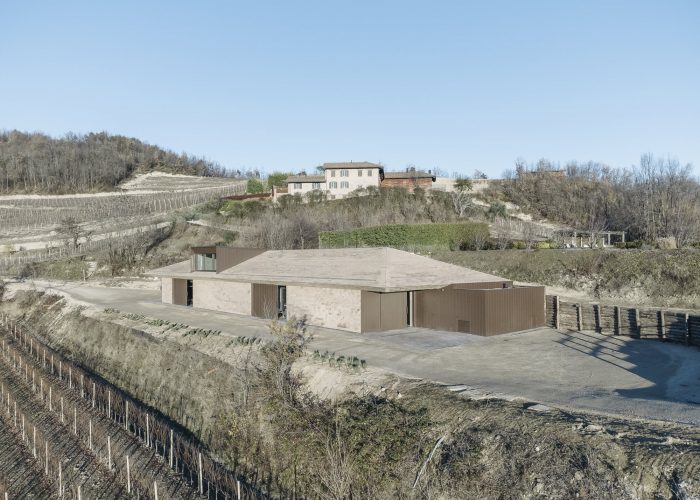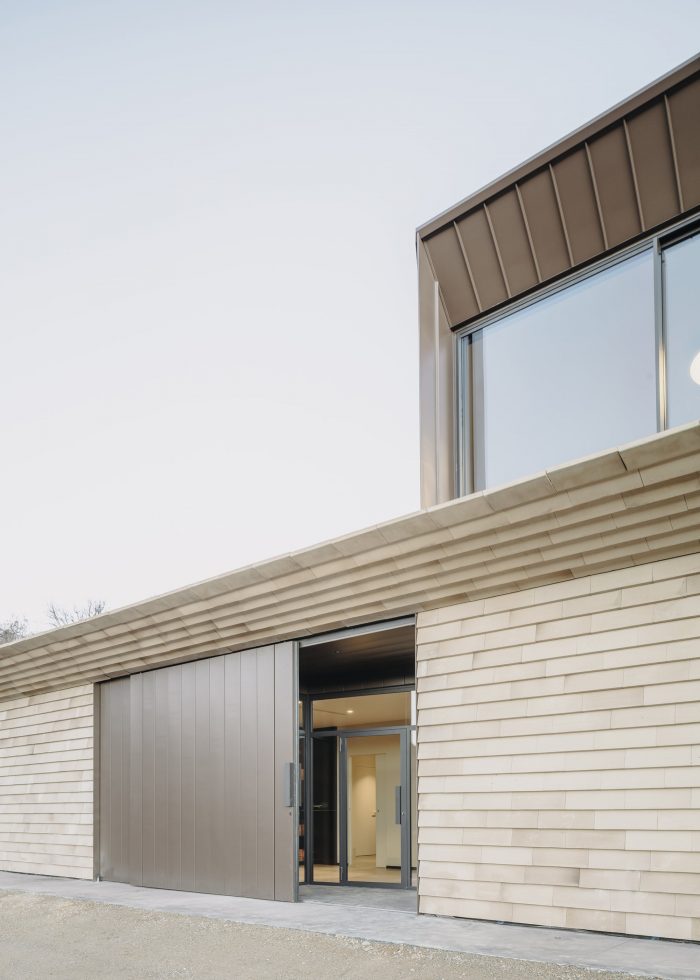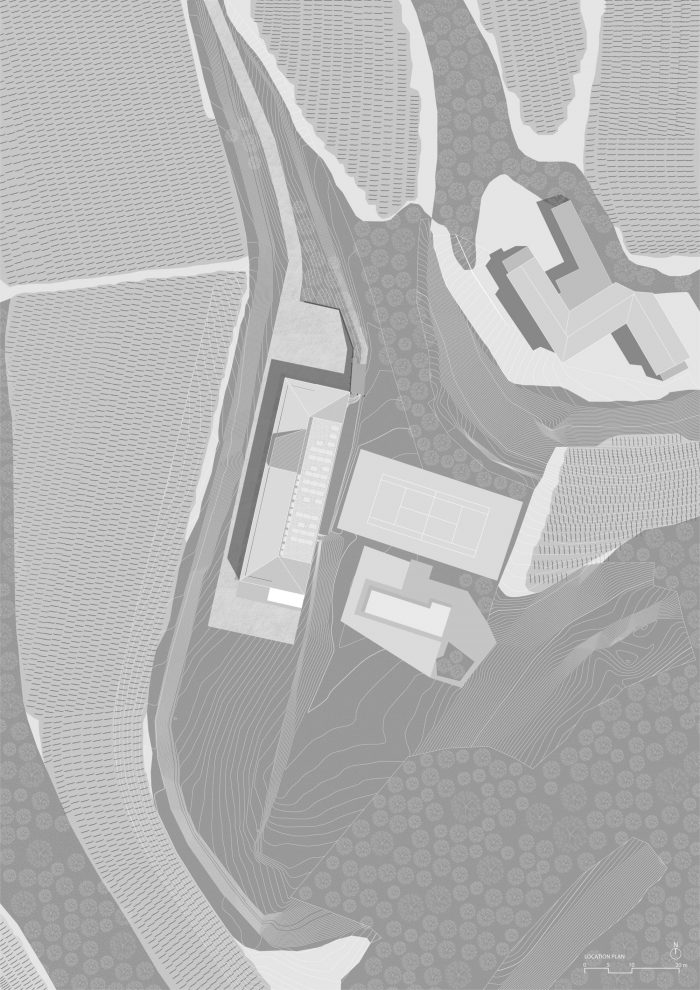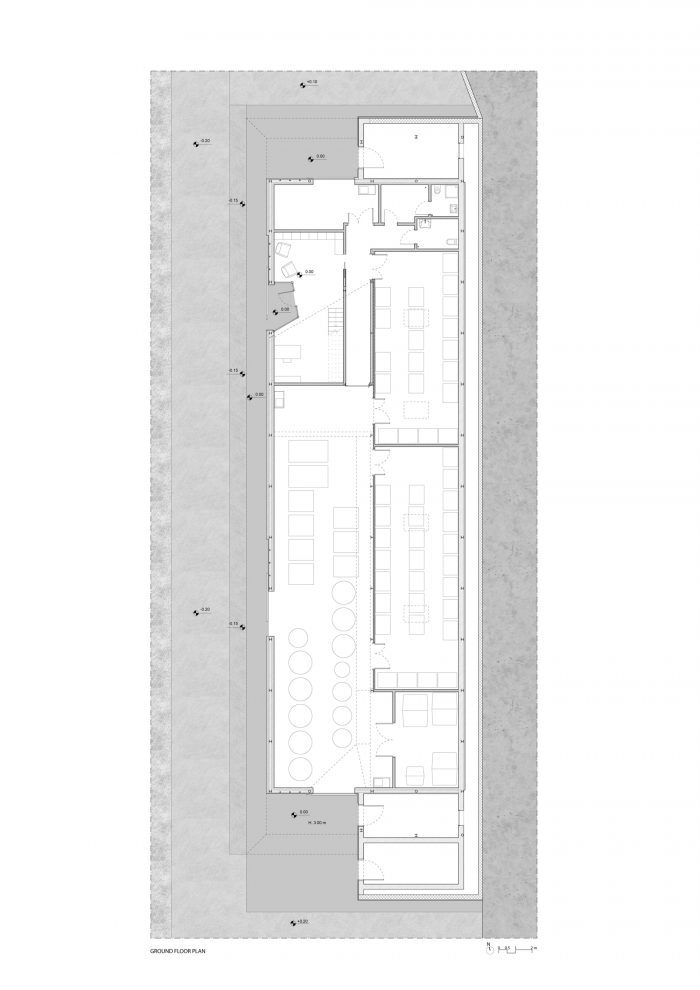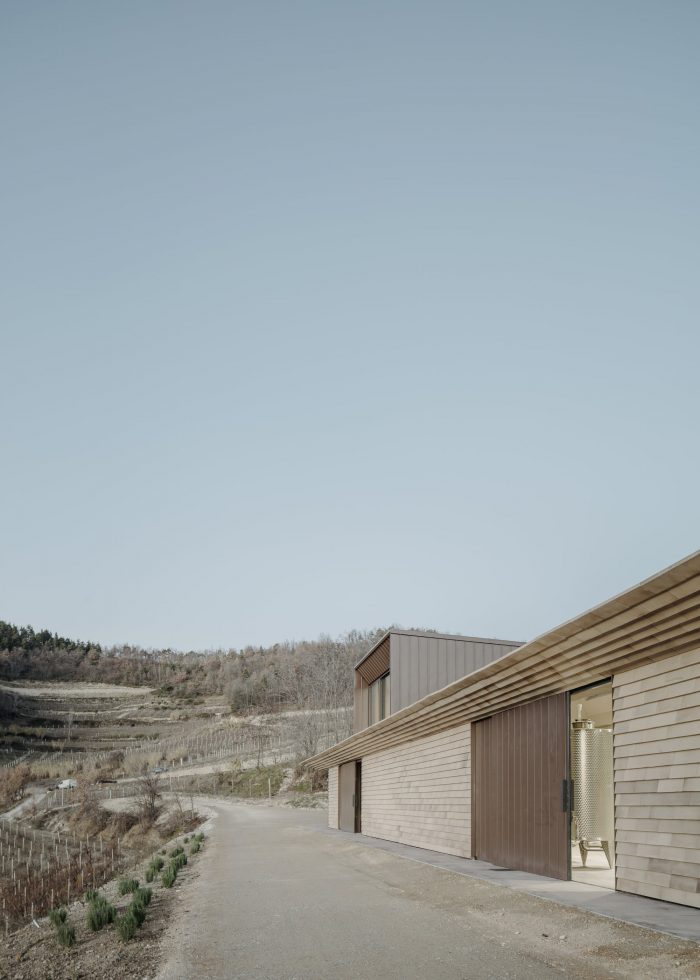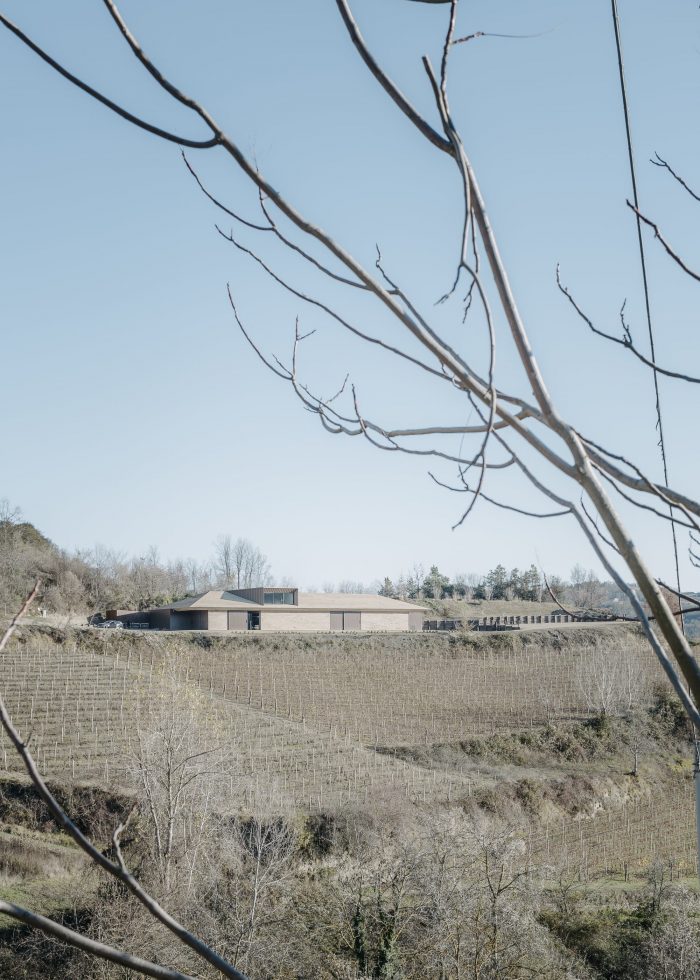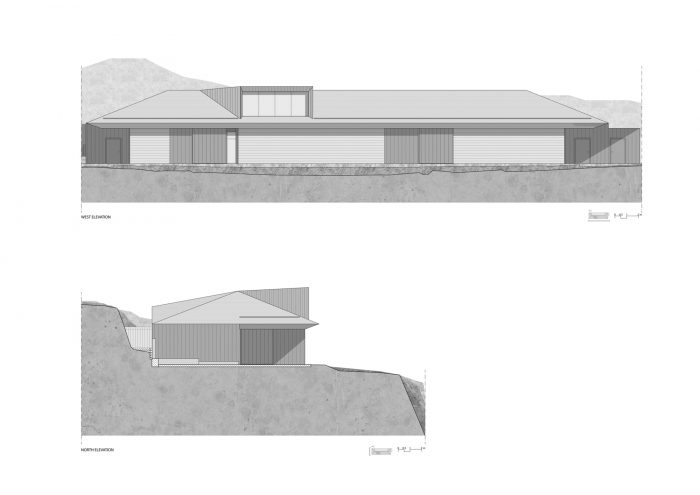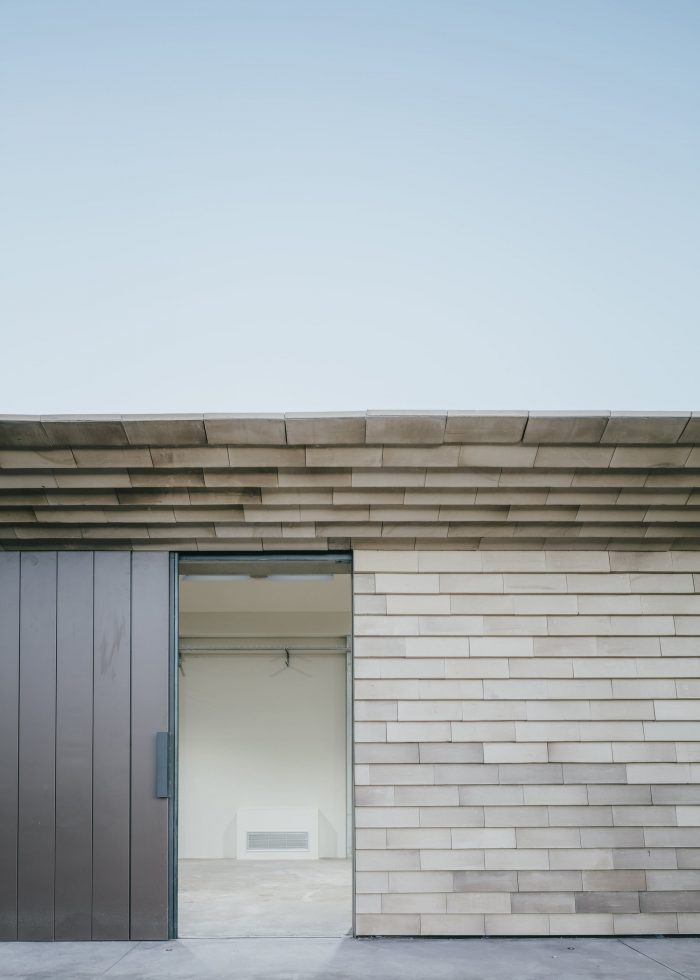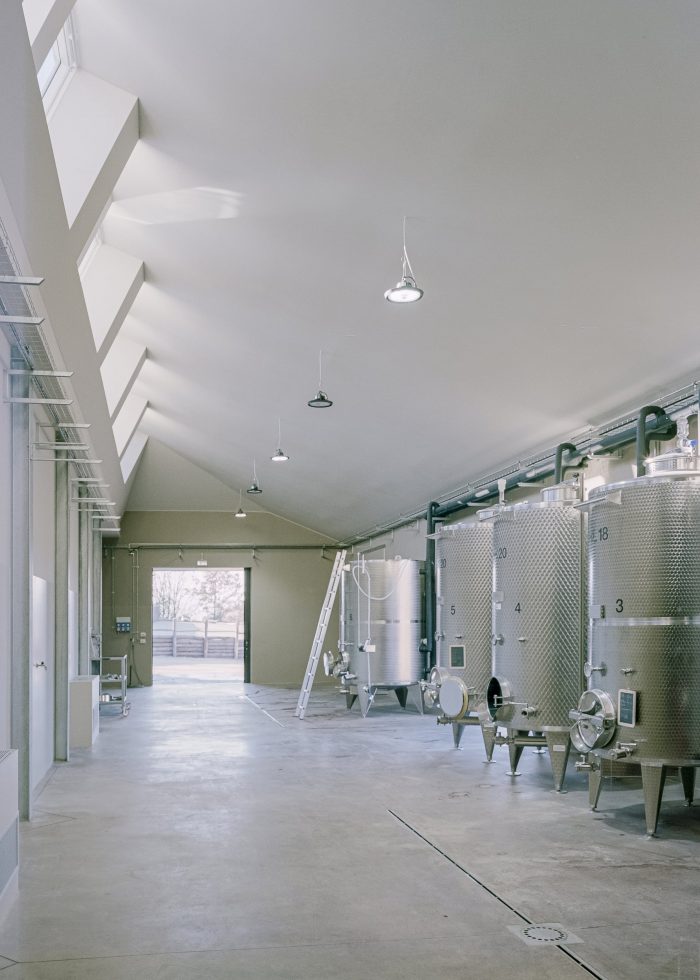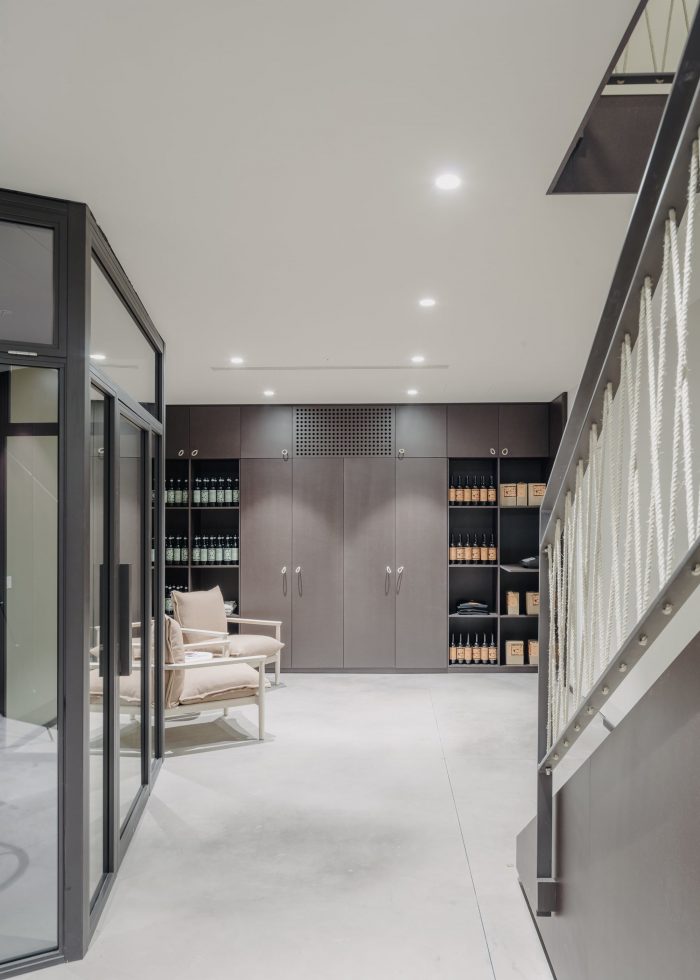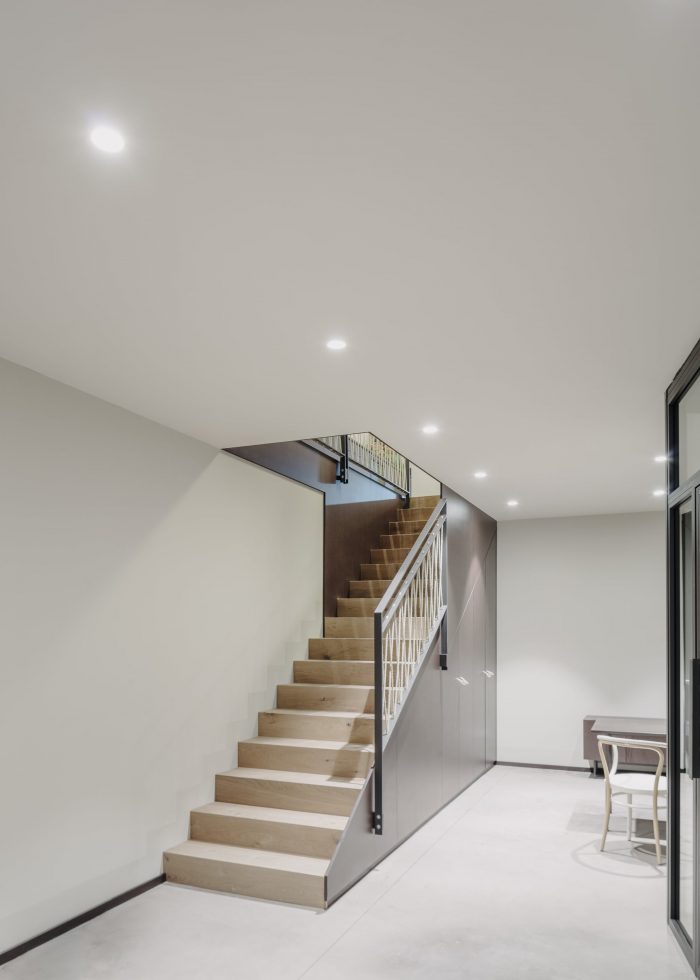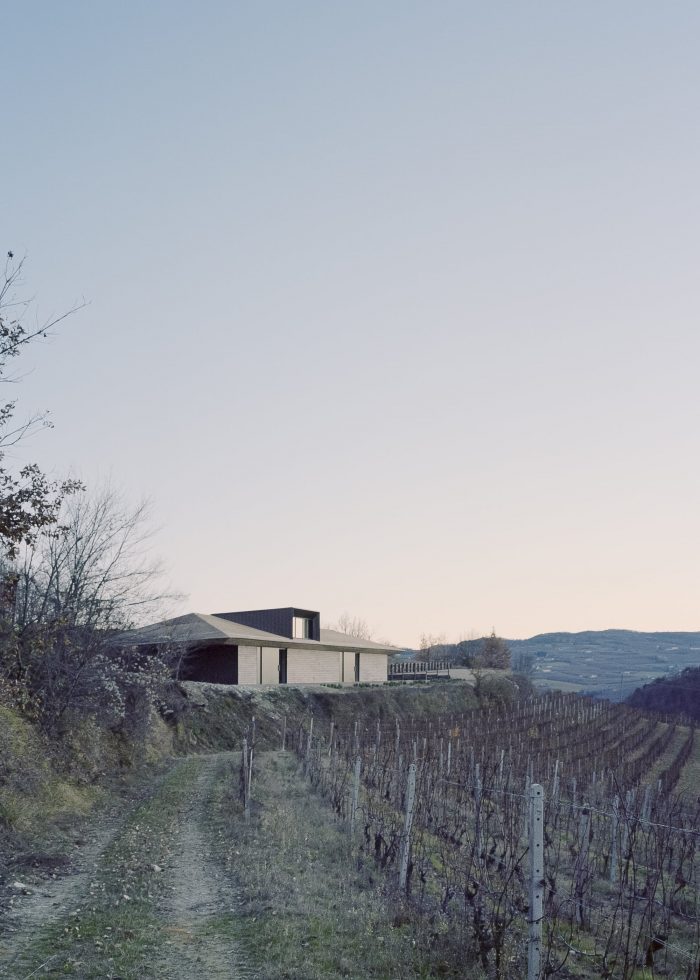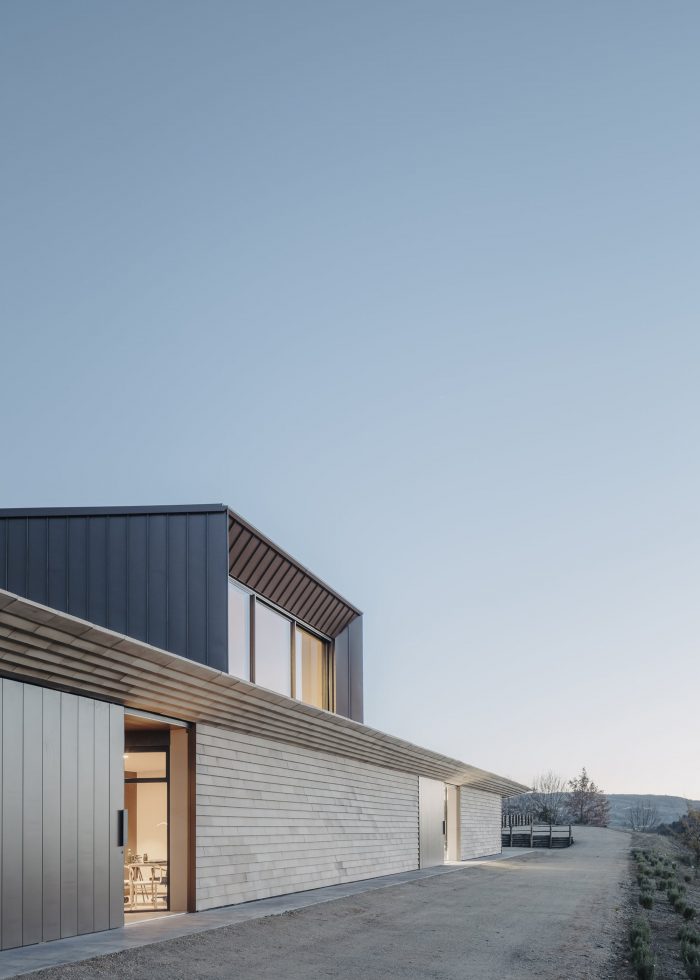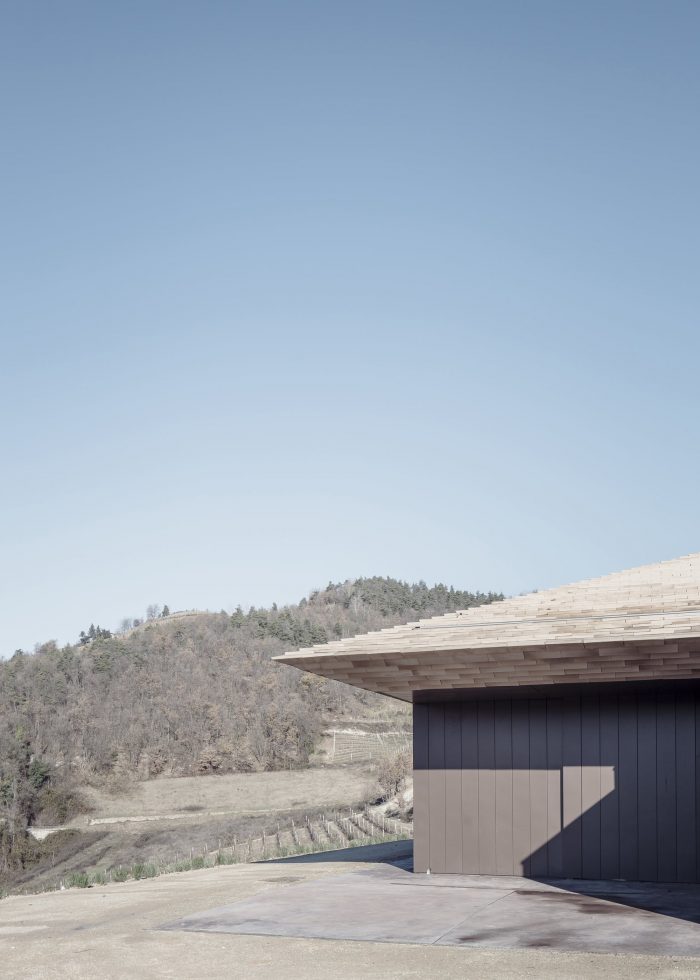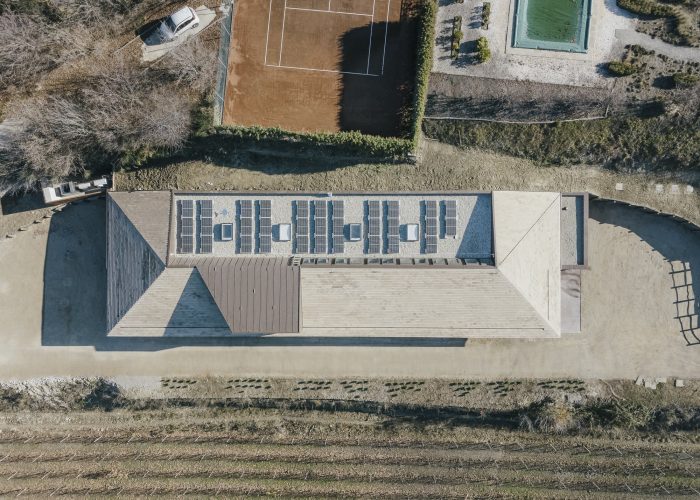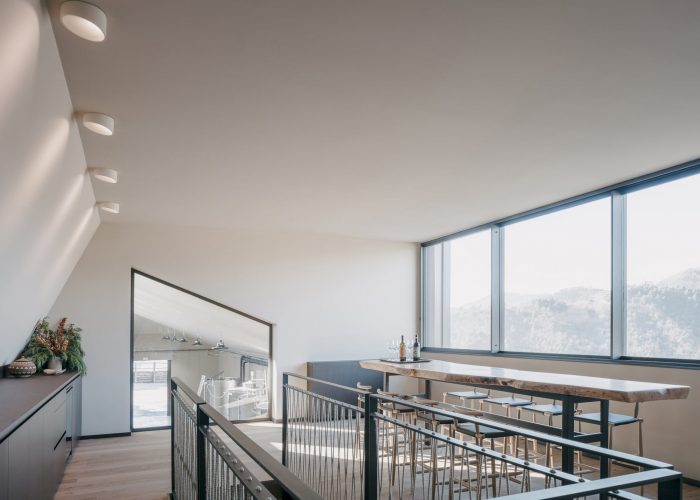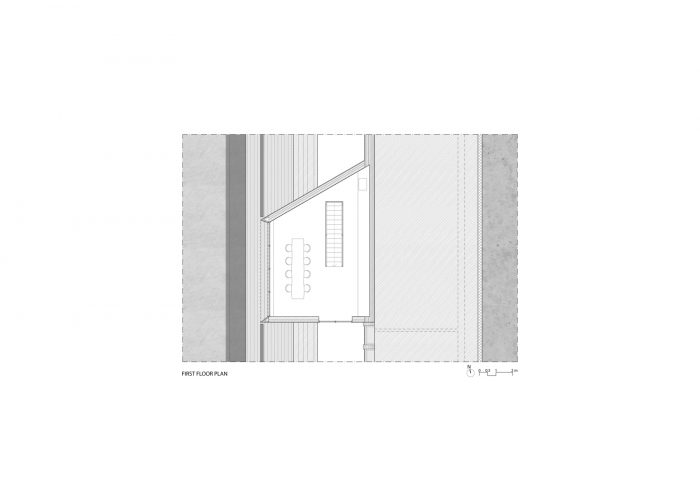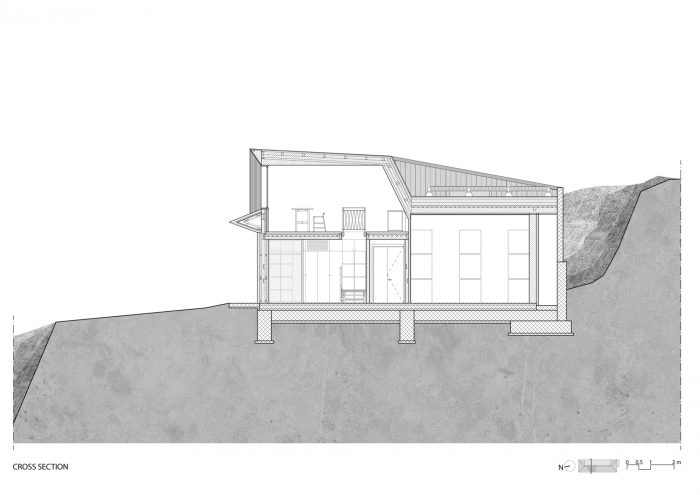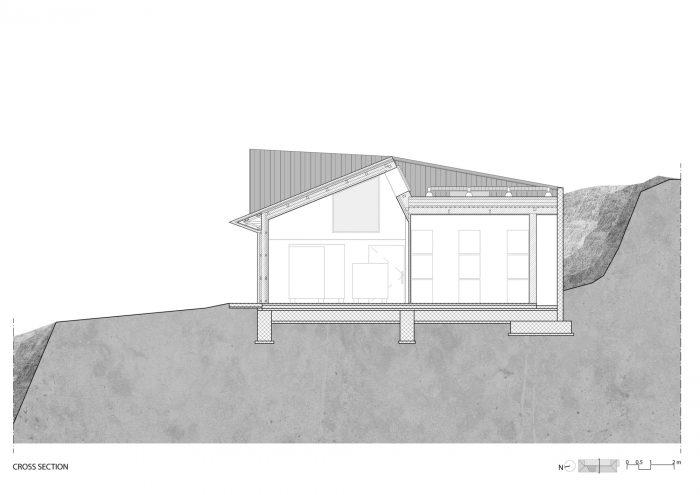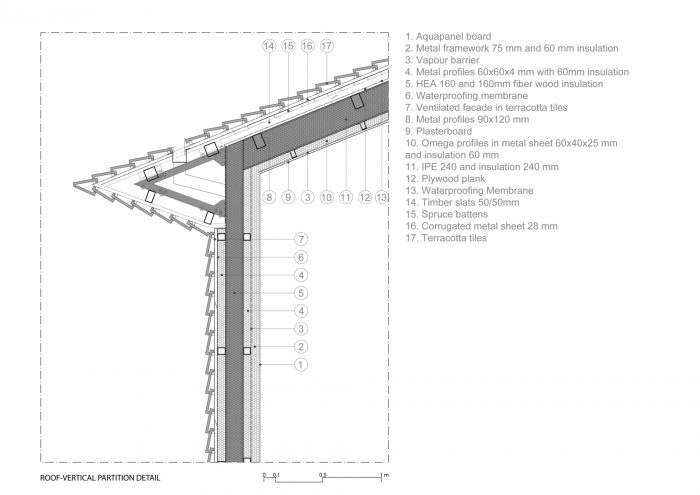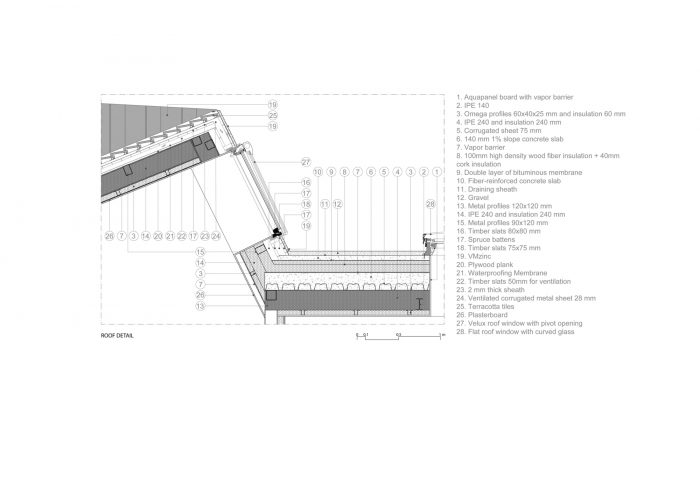作为建筑师的责任感总是指导我们起草一个新的项目,以极其尊重的态度评估建筑所在的地方的灵魂,从环境和经济的角度使其尽可能的可持续。为有机葡萄酒厂设计的建筑是一个机会,可以找到解决方案,通过限制挖掘和位移来减少对景观的影响。
The sense of responsibility as architects always guides us in drafting a new project, evaluating with extreme respect the soul of the place where the building is located, making it as sustainable as possible from an environmental and economic perspective. The design of a building intended for an organic winery was an opportunity to find solutions that would minimize the impact on the landscape by limiting excavation and displacements.
建筑物位于山上,主要是按照景观的等高线水平扩展,并在靠近现有悬崖的地方形成一个自然平台。建筑细节的质量暗示了对葡萄酒生产工艺的关注。领土的表现力决定了建筑围护结构的颜色选择,它代表了建筑与自然的接触和交流。棕色调的调色板指的是大地、葡萄、葡萄汁的颜色,有助于增强该地的特征。
Located on a hill, the building expands mainly horizontally following the contour lines of the landscape settling into a natural terrace close to an existing escarpment. The quality of the architectural detail alludes to the care of the wine production craftsmanship. The expressive character of the territory determines the selection of the colors of the building envelope which represents the contact and exchange between architecture and nature. The palette in shades of brown refers to the colors of the earth, the vine, the must and helps to enhance the identity of the place.
建筑材料的选择有利于选择当地的和生态可持续的产品,倾向于选择能够减少维护需求的解决方案,并确保在未来可能的建筑拆除中,回收和循环利用最大量的建筑材料,限制建筑留下的足迹。
The choice of construction materials was made in such a way as to favor the selection of local and eco-sustainable products, preferring solutions that reduce the need for maintenance and ensure that, in a possible future demolition of the building, the recovery and recycling of the largest number of building material, limits the footprint left by the building.
该建筑系统由一个预制的钢架组成,可以很容易地拆卸,并且可以完全回收。这使得施工时间大大缩短,从而使该建筑在8个月内完成。
The construction system consists of a prefabricated steel frame that can be easily dismantled and is completely recyclable. This resulted in a significant reduction in construction time which allowed for the completion of the building in eight months.
外墙覆盖着浅棕色的陶土砖,带有水平图案,通过模仿沉积岩的典型结构,将建筑融入到自然环境中,具有分层的特点。选择具有高密度特性的粘土覆层材料,通过增加惯性来衰减夏季建筑内的高温,确保了高热滞后性能。
The façade, covered in light brown terracotta tiles with a horizontal pattern, integrates the building into the natural environment characterized by mimicking the typical structure of the sedimentary rock with a layered texture. The choice of a clay cladding material with high-density characteristics ensures a high thermal lag performance by increasing inertia with attenuation of high temperatures inside the building in summer.
通过利用建筑所处的现有地面的热惯性,以及通过用于立面和屋顶的通风墙系统散去太阳辐射的热量,将酒窖空调的能源需求降到最低。隔热材料都是自然形成的:木纤维、麻和软木板。
The energy requirement for the cellar’s air conditioning is minimized by exploiting the thermal inertia of the existing ground against which the building has been placed and dissipating the heat of solar radiation through the ventilated wall system, used on the façade and roof. The insulating materials are all naturally derived: wood fiber, hemp, and cork panels.
平屋顶上的光伏板保证了来自可再生资源的能源生产,并通过雨水的循环利用减少了水的需求。建筑物功能区的设计细节有助于优化葡萄酒生产过程的工作流程,尊重使用房间的人的需求。专门用于每项活动的功能区(接收葡萄、压榨-粉碎、发酵、酿酒发展、装瓶、储存、测试、包装和运输)创造了一个健康的工作环境,提供通风和间接自然光,目的是在保持足够环境舒适度的同时节约能源。品酒室的特点是有一个大窗户,在视觉上将建筑与周围的景观和葡萄园联系起来。
The production of energy derived from renewable sources is guaranteed by the photovoltaic panels on the flat roof and the water requirement is reduced through the recycling of rainwater. The design details of the functional areas of the building serve to optimize the workflow of the wine production process, respecting the needs of those who use the rooms. The functional areas dedicated to each activity (reception of the grapes, pressing-crushing, fermentation, oenological development, bottling, storage, testing, packaging, and shipping) create a healthy work environment, providing ventilation and indirect natural light, with the aim of saving energy while maintaining adequate environmental comfort. The tasting room is characterized by a large window that visually connects the building to the surrounding landscape and vineyards.
Architects: BRH+
Area : 608 m²
Year : 2021
Photographs :Aldo Amoretti
Manufacturers : CGF Design, Fornace S.Anselmo srl, Fratelli Sartore srl, Luceper srl, Marzero spa, Sinergie srl, VMZINC, Velux spa
Structural Engineer : Innocente Porrone
Project Architect : Barbara Brondi, Marco Rainò
Design Development : Giulia Nardi
City : Rocchetta Belbo
Country : Italy



